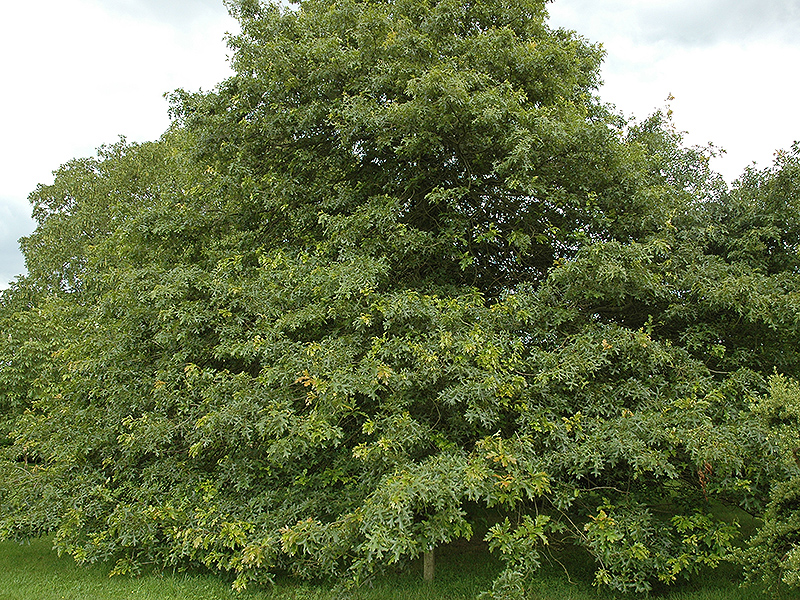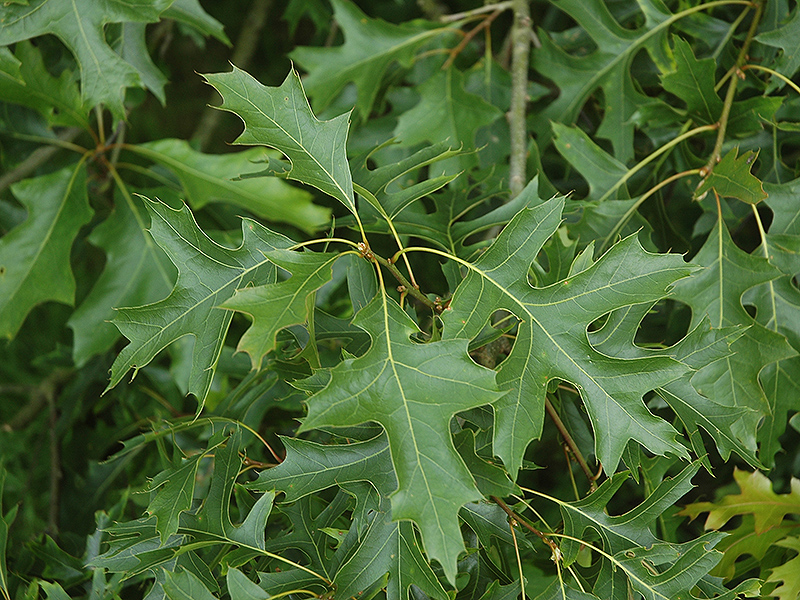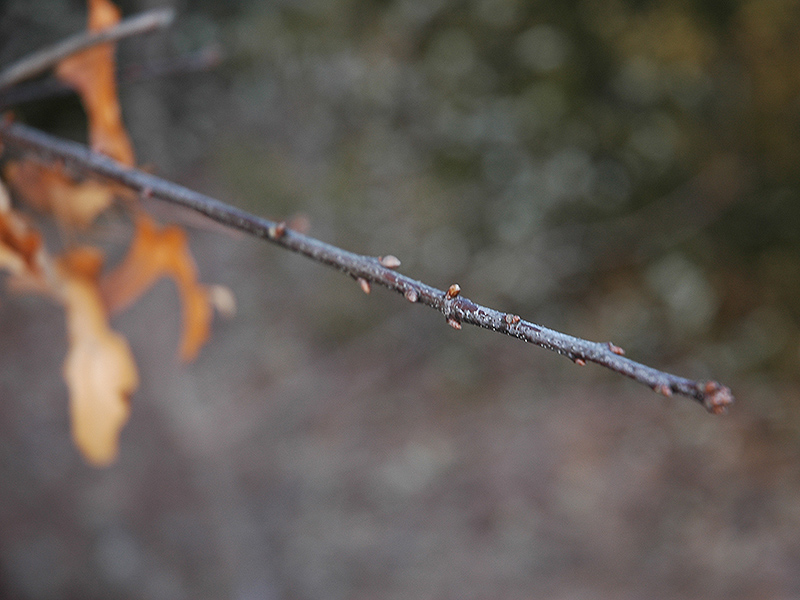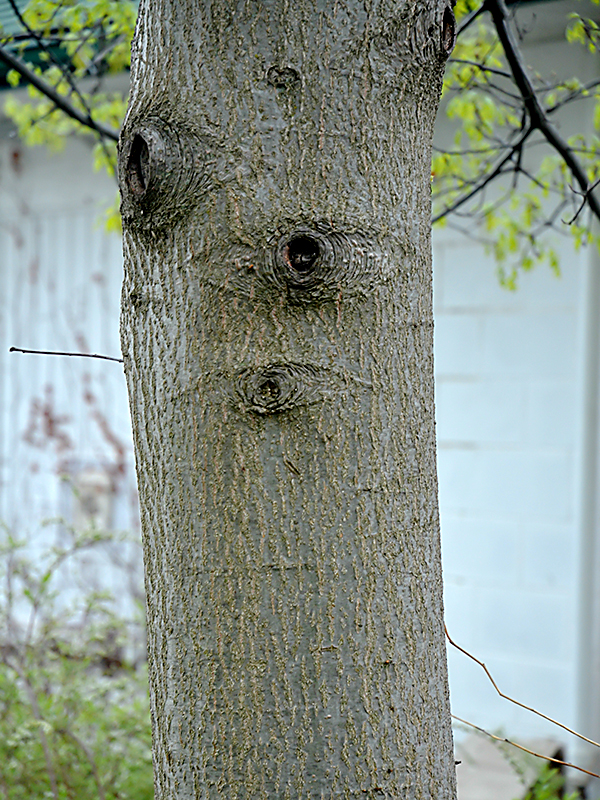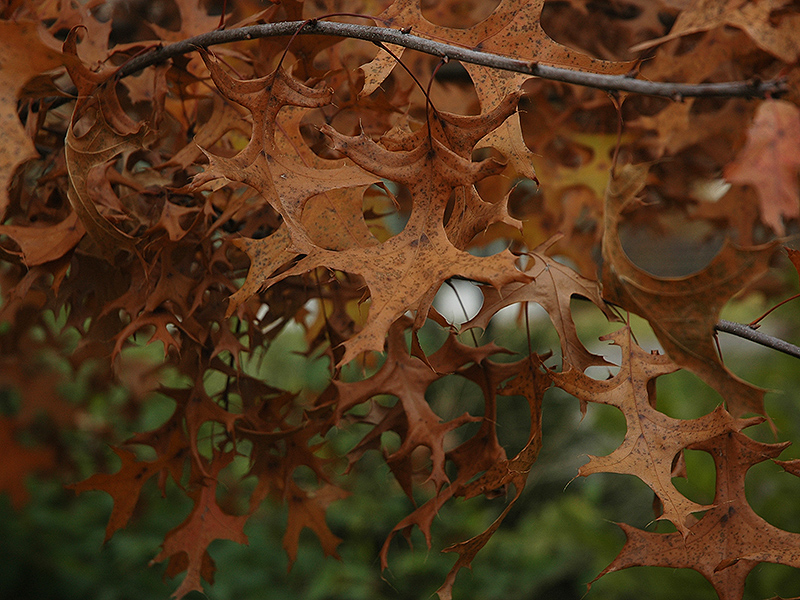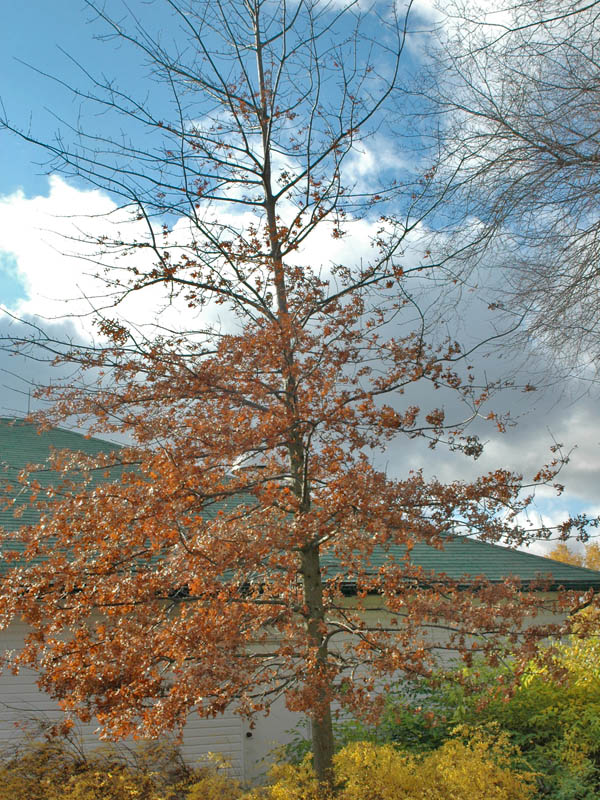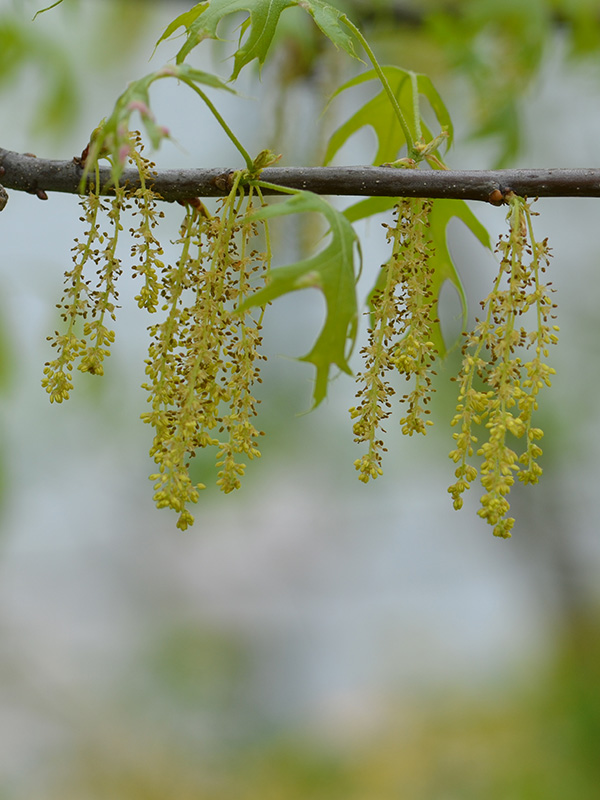
Woody > Quercus > Quercus palustris > Quercus palustris
Quercus palustris
Pin Oak
Origin: United States of America and Southern Ontario, Canada.
Mike's
Opinion


"
Has a unique branching pattern as a specimen tree, it is very tolerant to urban settings, can tolerate standing in water for an extended period of time, and it is widely used as a native oak in landscapes. One of the best oak species.
Michael Pascoe, NDP., ODH., CLT., MSc. (Plant Conservation)
"
| Family |
| Fagaceae |
| Genus |
| Quercus |
| Species |
| palustris |
| Category |
| Woody |
| Type |
| Tree (deciduous) |
| Pronunciation |
| USDA Hardiness Zone |
| 4 - 8 |
| Canadian Hardiness Zone |
| 2a - 8a |
| RHS Hardiness Zone |
| H7 - H4 |
| Temperature (°C) |
| (-32) - (-7) |
| Temperature (°F) |
| (-25) - (-20) |
| Height |
| 20-25 m |
| Spread |
| 8-12 m |
Photographs
Description and Growing Information
Flowering Period
| General Description |
| Has narrow lobes on leaves, light brown acorns with shallow caps, and a brilliant autumn leaf colour. This species has been placed on the IUCN Red List as least concern. |
| Cultivation |
| Often transplanted because of shallow, fibrous roots. Tolerant of wet soil and sulfur dioxide, may have problems with chlorosis in urban settings, due to high pH. |
| Shape |
| Pyramidal to broadly columnar. |
| Growth |
| Medium |
| ID Characteristic |
| Has a unique branching habit (pyramidal head with horizontal branches), fine textured leaves with thin narrow lobes. Branches radiate from the trunk at 90°. |
| Pests |
| Susceptible to borers, canker, caterpillars, leaf gall, leaf miners, leaf rollers, leaf skeletonizers, leaf spot, powdery mildew, rust, scale insects, twig blight, wilt. |
| Habitat |
| Wet areas, swamps, flood plains and lake plains with high water tables in the spring. |
| Bark/Stem Description |
| Grey-brown, thin, smooth and with age develops narrow, shallow ridges. |
| Flower/Leaf Bud Description |
| Imbricate, 25-50 mm long, ovate to conical, sharp-pointed, grey-brown to chestnut brown. |
| Leaf Description |
| Alternate, simple, 7.5-16 cm long and may be as wide, terminal lobe long acuminate, 5–7 lobes, beneath the leaf it has axillary hairs. |
| Flower Description |
| Appear in early April, when leaves not fully out; male flowers are in hairy catkins, 5-7.5 cm long, female flowers are tiny, hairy, and are solitary or in pairs on stem. |
| Fruit Description |
| Acorn, solitary or clustered, 1 cm long, 1.5-2 cm wide, light brown, shallow cap with tight small scales, and matures in its second year. |
| Colour Description |
| Summer foliage lustrous dark green above and lighter green below, autumn foliage is red to red-brown or bronze. |
| Texture Description |
| Medium in leaf, medium-coarse in winter. |
| Notable Specimens |
| Memorial Park, Windsor, Ontario, Canada. |
| Propagation |
| Seeded using acorns by stratifying them for 30-40 days, at 5° C, can be rooted by taking cuttings, and is grafted when producing cultivars. |
